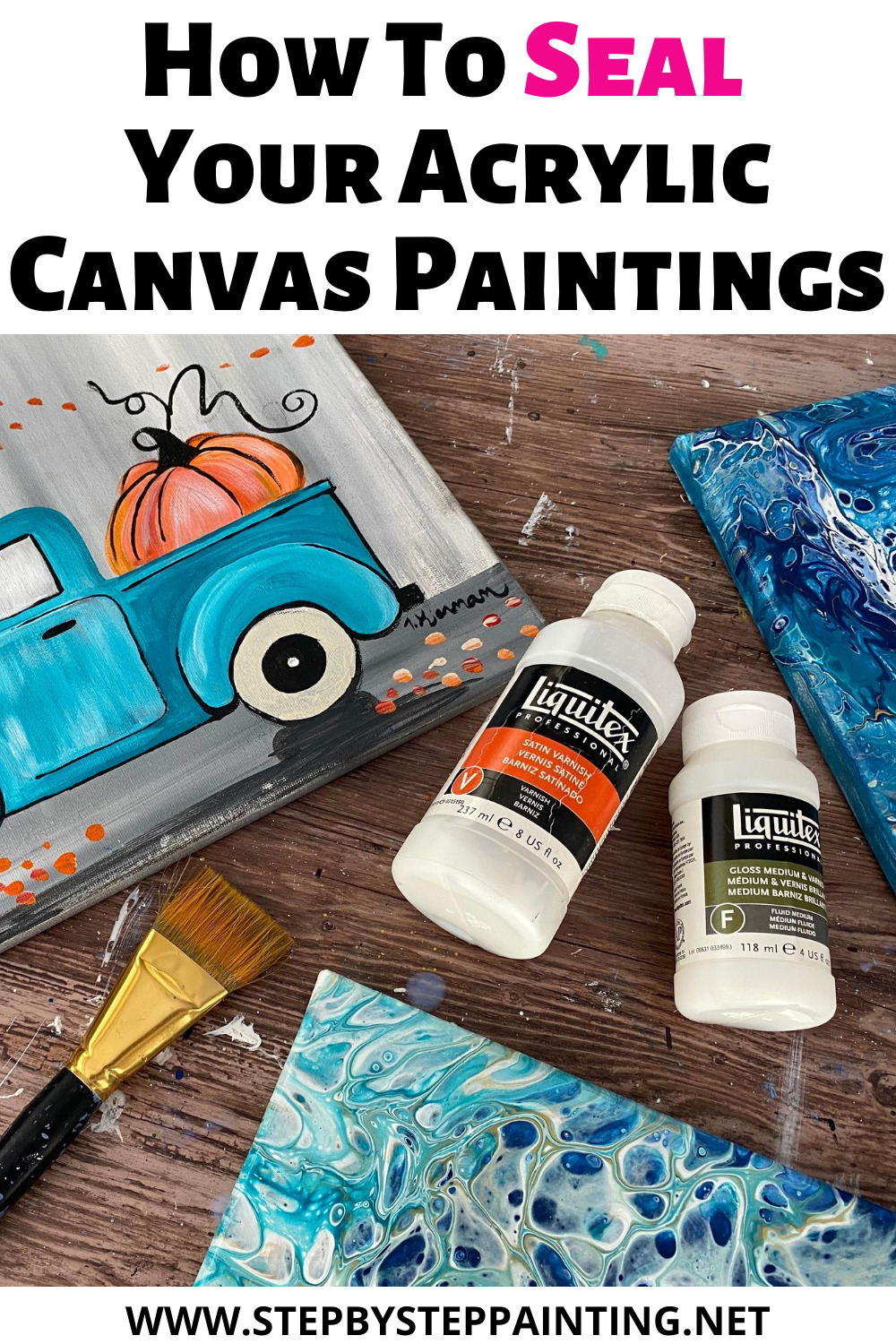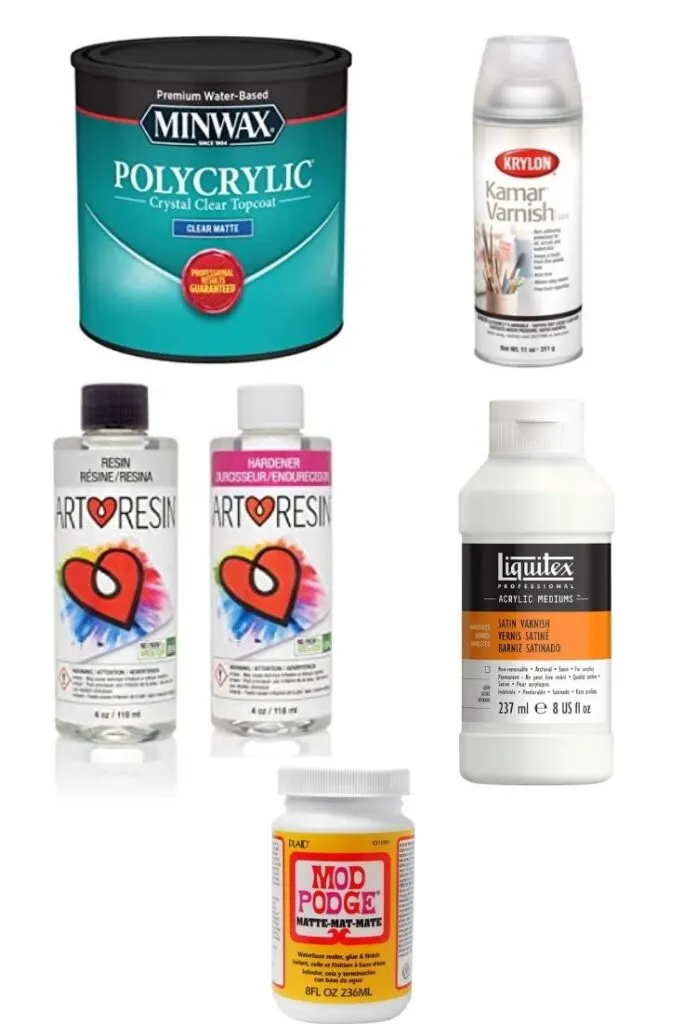To seal acrylic paint on plastic, use a clear acrylic sealer spray or a brush-on sealant. Apply it in thin, even coats for best results.
Sealing acrylic paint on plastic is essential for durability and longevity. Acrylic paint can chip or fade when exposed to moisture or sunlight. Using a sealant protects your artwork and enhances its appearance. Various types of sealers are available, including spray and brush-on options, allowing for versatility based on your project.
Ensuring the surface is clean and dry before application is crucial for adhesion. Proper sealing not only preserves your work but also provides a smooth finish. This guide will help you choose the right sealing method and apply it effectively, ensuring your painted plastic pieces remain vibrant and intact for years.

Credit: stepbysteppainting.net
Contents
- Introduction To Acrylic Paints On Plastic
- Materials Needed For Sealing Acrylic Paint On Plastic
- Preparation Of Plastic Surface
- Step-by-step Painting Process
- Drying Time And Conditions
- Choosing The Right Sealant
- Application Of Sealant
- Curing The Sealant
- Maintenance Tips
- Troubleshooting Common Issues
- Creative Ideas For Decorated Plastics
- Safety And Environmental Considerations
- Frequently Asked Questions
- Conclusion
Introduction To Acrylic Paints On Plastic
Acrylic paints are popular for their vibrant colors and quick drying properties. They can be used on many surfaces, including plastic. This versatility makes them a favorite among artists and crafters. However, using acrylic paint on plastic can be tricky.
Plastic surfaces are often smooth and non-porous. This means paint can easily peel or chip off. To ensure the best results, proper preparation is important. Cleaning the plastic and using a primer can help the paint stick better. Understanding these challenges can lead to better outcomes when working with acrylic paints on plastic.
Materials Needed For Sealing Acrylic Paint On Plastic
To effectively seal acrylic paint on plastic, gather essential materials like a clear acrylic sealer, paintbrush, and sandpaper. Choosing the right products ensures longevity and durability of your artwork. Proper preparation is key for achieving a smooth, professional finish.
Types Of Sealants Suitable For Plastic
- Acrylic Spray Sealant: Easy to use and dries quickly.
- Polyurethane Sealant: Provides strong protection against scratches.
- Epoxy Resin: Creates a durable, glossy finish.
Additional Tools And Supplies
- Paintbrush: For applying sealant smoothly.
- Sandpaper: Helps roughen the surface for better adhesion.
- Masking Tape: Protects areas not to be sealed.
- Drop Cloth: Keeps the workspace clean.
Preparation Of Plastic Surface
Start by cleaning the plastic object thoroughly. Use soap and water to remove dirt. Rinse it well and let it dry completely.
For better adhesion, sanding the surface is important. Use fine-grit sandpaper to gently scuff the plastic. This creates tiny grooves for the paint to grip.
Make sure to wipe away any dust after sanding. A clean surface helps the paint stick better. Always work in a well-ventilated area for safety.

Credit: www.reddit.com
Step-by-step Painting Process
Start by cleaning the plastic surface. Use warm soapy water and a cloth. Rinse and let it dry completely.
Apply a base coat of acrylic paint. Use a soft brush for an even finish. Wait until the base coat is dry before adding more layers.
For layering, choose vibrant colors that complement each other. Apply thin layers of paint to avoid drips. Allow each layer to dry before adding the next.
After finishing the layers, check for any uneven spots. Touch them up with a small brush. This will enhance the overall look of your project.
Drying Time And Conditions
Drying acrylic paint on plastic needs the right conditions. The ideal drying environment includes warm temperatures and good airflow. Aim for a temperature between 70°F and 85°F. Low humidity levels are also important. Too much moisture can affect drying.
Wait at least 24 hours before sealing. This duration allows the paint to dry completely. Check the paint’s touch before sealing. If the surface feels tacky, wait longer. Sealing too early can cause smudging or damage.
Choosing The Right Sealant
Choosing the right sealant is important for your project. Water-based sealants are easy to use and clean up. They dry quickly and have less odor. Oil-based sealants offer a strong finish but take longer to dry. They can be harder to clean. Consider your needs before making a choice.
UV-resistant sealants provide extra protection against sunlight. They help keep colors bright and prevent fading. Use these sealants for outdoor projects or sunny areas. A good UV-resistant sealant will extend the life of your artwork.
Application Of Sealant
To achieve an even coating, use a soft brush or spray. Apply the sealant in thin layers. This helps avoid drips and bubbles. Wait for each coat to dry completely before applying the next.
For the best results, two to three coats are recommended. This ensures full protection of the paint. Let the last coat dry thoroughly to avoid smudging. Always follow the manufacturer’s instructions for drying times.
Curing The Sealant
After applying the sealant, curing time is very important. It helps the sealant stick well. Most sealants need at least 24 hours to cure properly. Some may take longer, depending on the brand.
Follow these post-curing practices for best results:
- Keep the sealed item in a dry area.
- Avoid touching the surface until fully cured.
- Do not expose it to direct sunlight immediately.
- Store it at a stable temperature for better curing.
Maintenance Tips
Routine cleaning keeps your acrylic paint looking fresh. Use a soft cloth or sponge. Avoid harsh chemicals that can damage the paint.
For best results, clean the surface gently. Warm, soapy water works well. Rinse with clean water and dry completely.
Protecting from scratches and wear is crucial. Use a clear sealant for extra protection. This helps keep the paint intact.
Store painted items away from direct sunlight. Sun can fade colors over time. Handle painted surfaces with care to avoid scratches.
Troubleshooting Common Issues
Bubbling and peeling can happen if the paint is not fully dry. Use a heat gun or hair dryer to fix bubbles. Gently heat the area to flatten it out.
For peeling, ensure the surface is clean and dry before applying sealant. A proper sealant can help prevent these issues.
Sealant discoloration may occur due to improper application. Avoid applying in direct sunlight or high humidity.
Always test a small area first. This way, any potential discoloration can be spotted early. Use a clear sealant designed for plastics to avoid changes in color.
Creative Ideas For Decorated Plastics
Personalizing household items can be fun and easy. Use acrylic paint to add color. Try painting flower pots or storage bins. You can create unique designs that match your style.
Gift ideas can be creative and special. Decorate plastic mugs for friends. Personalized coasters make great gifts, too. Seasonal decor is another option. Paint plastic pumpkins for fall. Create festive ornaments for holidays. Each item tells a story.
| Item | Decoration Idea |
|---|---|
| Flower Pots | Bright colors and patterns |
| Mugs | Personalized names or quotes |
| Pumpkins | Seasonal faces and designs |
| Coasters | Fun shapes and colors |
| Ornaments | Holiday-themed designs |
Safety And Environmental Considerations
Proper ventilation is very important during the application of acrylic paint. Open windows and doors to let fresh air in. Use a fan to help circulate the air. Avoid using paint in small or closed areas. This protects your health and keeps the air clean.
Disposing of materials safely is also crucial. Always check local regulations for proper disposal methods. Never throw paint in the regular trash. Use designated hazardous waste facilities. This helps keep the environment safe and clean.

Credit: feelingnifty.com
Frequently Asked Questions
What Is A Good Sealant For Acrylic Paint On Plastic?
A good sealant for acrylic paint on plastic is a clear acrylic sealer. Choose a spray or brush-on option for easy application. Ensure it is compatible with acrylics for the best results. This will enhance durability and protect your artwork from fading and damage.
How Do You Make Acrylic Paint Permanent On Plastic?
To make acrylic paint permanent on plastic, clean the surface thoroughly. Use a primer designed for plastic. Apply the acrylic paint evenly and let it dry completely. Seal with a clear acrylic sealer for added durability. Always follow the manufacturer’s instructions for the best results.
What Can I Put Over Acrylic Paint To Seal It?
You can seal acrylic paint with a clear acrylic sealer, varnish, or polyurethane. Choose a spray or brush-on option based on your project. Ensure the paint is fully dry before applying the sealant for optimal results. This protects your artwork from moisture and UV damage.
Will Acrylic Paint Stay On Plastic?
Acrylic paint can adhere to plastic surfaces, but proper preparation is essential. Clean the plastic thoroughly and use a primer designed for plastics. This ensures better adhesion and durability of the paint. Without these steps, the paint may peel or chip easily.
Conclusion
Sealing acrylic paint on plastic is essential for durability. Follow the steps outlined for the best results. Use appropriate sealers to protect your artwork from wear and tear. Regular maintenance will keep your projects looking fresh. Enjoy your creative journey and showcase your beautifully sealed designs with pride.
